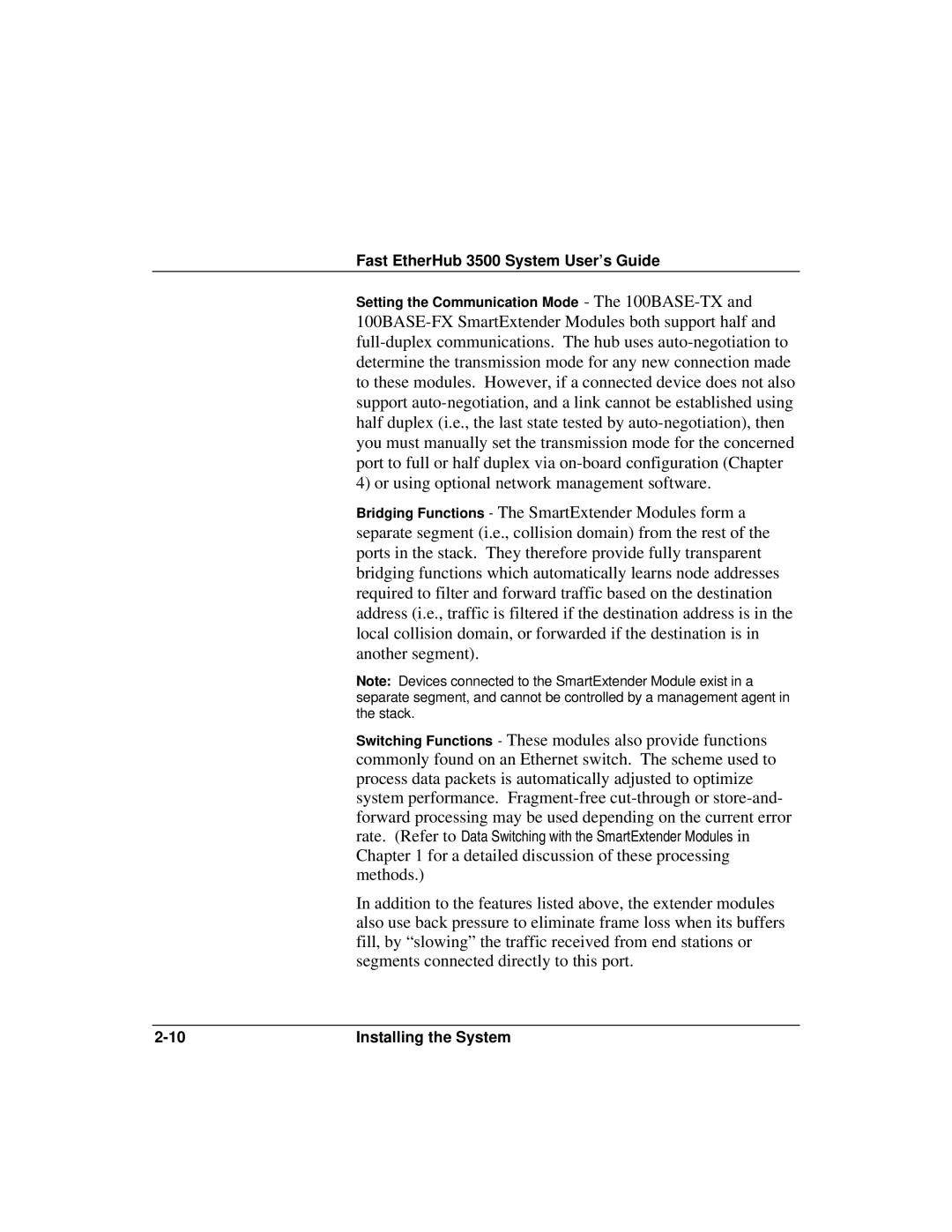
Fast EtherHub 3500 System User’s Guide
Setting the Communication Mode - The 100BASE-TX and
Bridging Functions - The SmartExtender Modules form a separate segment (i.e., collision domain) from the rest of the ports in the stack. They therefore provide fully transparent bridging functions which automatically learns node addresses required to filter and forward traffic based on the destination address (i.e., traffic is filtered if the destination address is in the local collision domain, or forwarded if the destination is in another segment).
Note: Devices connected to the SmartExtender Module exist in a separate segment, and cannot be controlled by a management agent in the stack.
Switching Functions - These modules also provide functions commonly found on an Ethernet switch. The scheme used to process data packets is automatically adjusted to optimize system performance.
In addition to the features listed above, the extender modules also use back pressure to eliminate frame loss when its buffers fill, by “slowing” the traffic received from end stations or segments connected directly to this port.
Installing the System |
